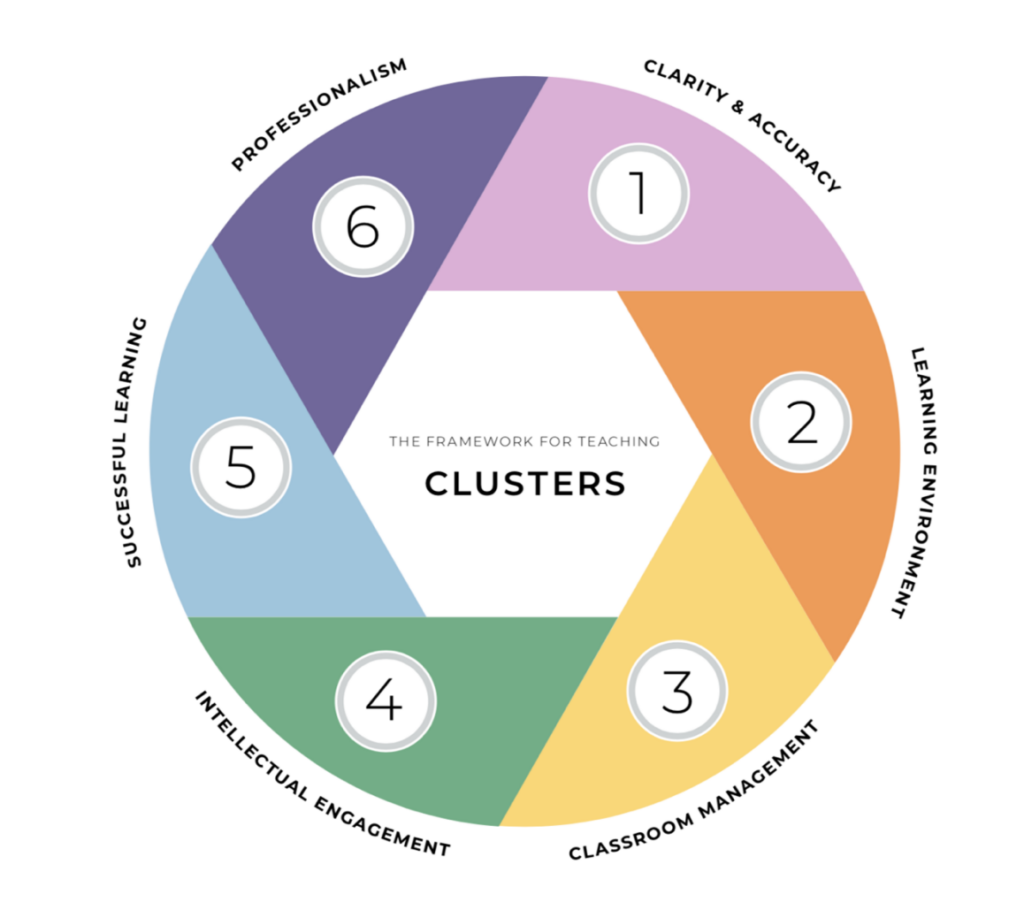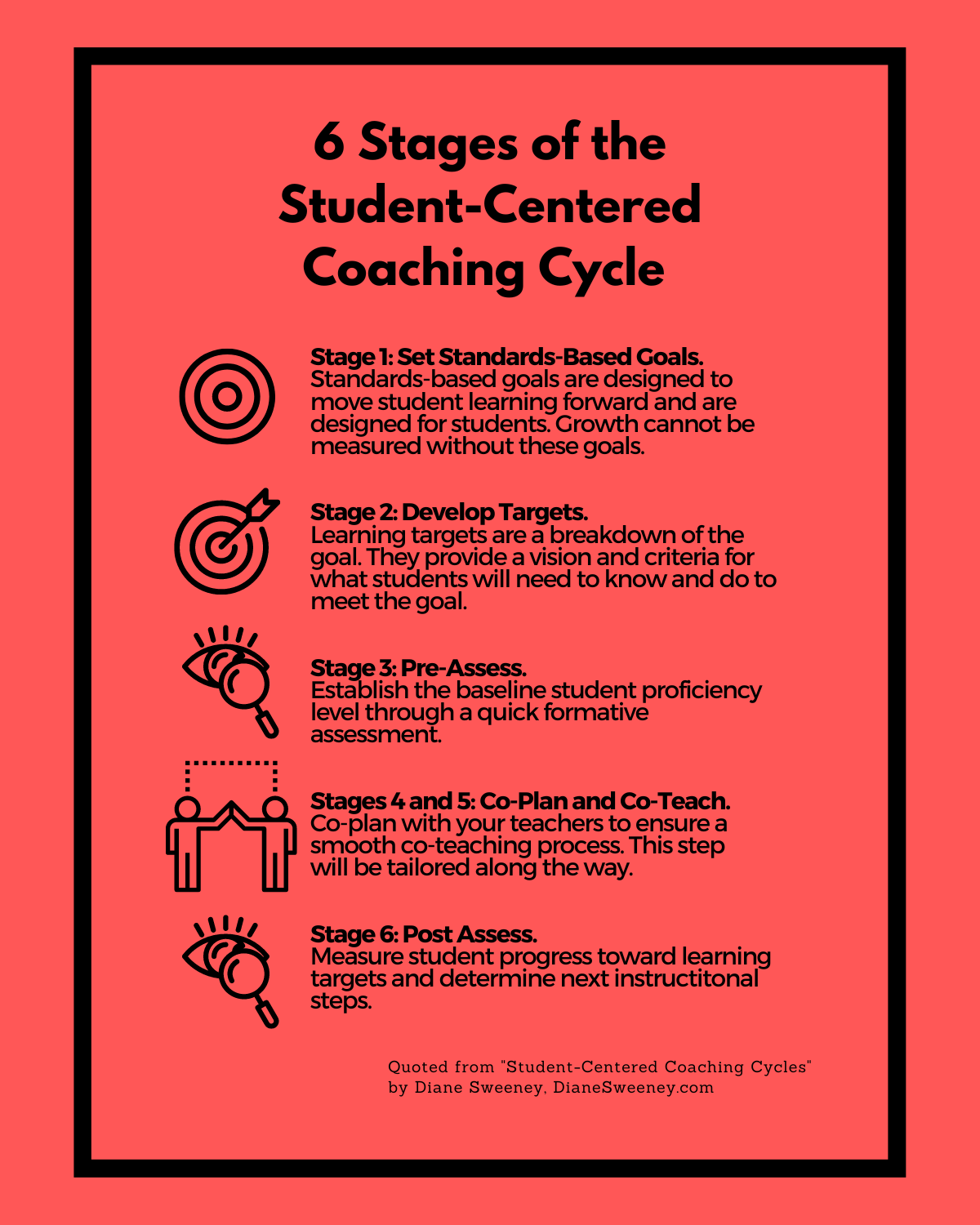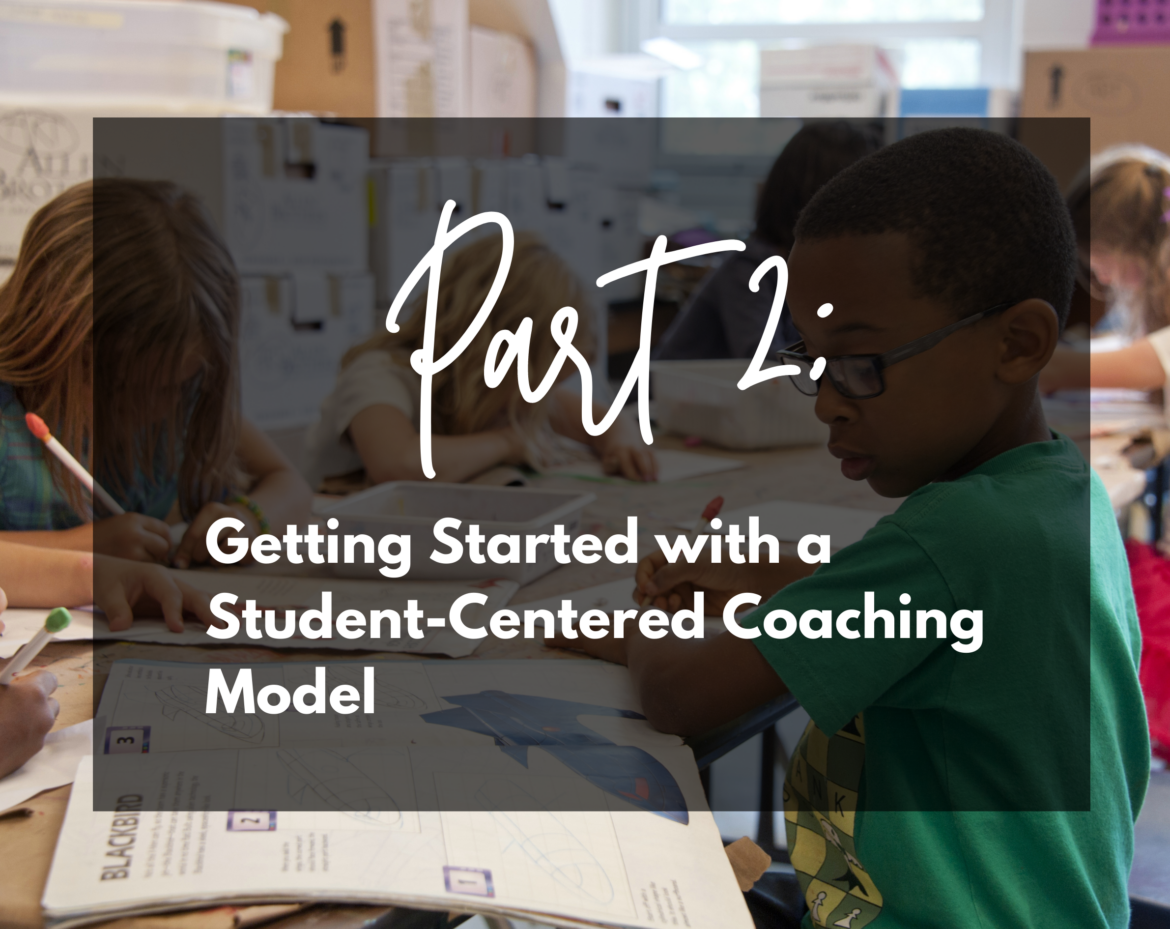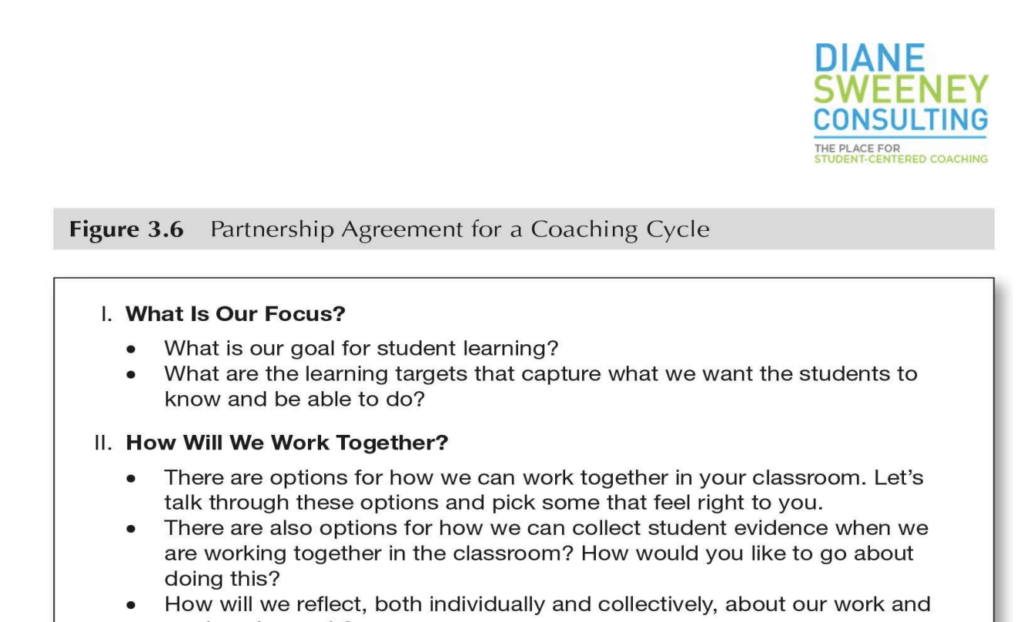Have you read my previous post, Part 1: Student-Centered Coaching Says Focus on Students Not Teachers? If not, head there to get an idea of what it means to take on a student-centered approach to coaching. In order to get things going with this coaching model, Diane Sweeney suggests five steps in her book, “Student-Centered Coaching: A Guide for K-8 Principals.” Let’s dive in!
Step 1: Defining your role with school leadership.
Working with school leaders is important. It’s also important to define your role. What will the role of “coach” look like specifically, and how will the leader work to support that role? Make sure you’re on the same page about each others’ roles with regard to coaching so that it’s clear for you, the leader, and the staff. Here is a great checklist offered by DianeSweeny.com that outlines calibration between leadership and coaches and a few other actions for getting started.
Step 2: Defining the model to staff and gauging interest.
Work with leadership to make sure teachers know exactly what student-centered coaching is and is not. Communicate this to all staff, and then, seek to learn who is on board with coaching to gain momentum. Sweeney suggests polling staff to ask about interest and goals.
Step 3: Scheduling time with interested teachers.
Meet with teachers to discuss their interests in coaching and get the conversation on student learning goals started. This helps shift the focus to being student-centered instead of teacher-centered. Once goals are set with teachers, it’s time to work on setting up an impactful schedule based on the coaching cycle.

professional conversations, and engaged teacher learning.”
Step 4: Organizing coaching cycles.
Coaching cycles are usually 6 to 9 weeks of regular planning meetings (one 30 or 50-minute meeting per week) and classroom visits for observation, co-teaching, and modeling (usually 1 to 3 times per week). The goal is based on student learning data. Teachers can complete 1 or 2 cycles during a school year, and coaches can usually manage 4 to 6 teachers at one time.

Step 5: Build your schedule.
Create an agreement with the teachers first. Then, once the expectations are clear, you can develop your coaching schedule for the first coaching cycle with this information in mind. It is recommended that your schedule be public, updated every trimester or quarter, and weekly planning meetings and classroom visits be added to the schedule.
Find out more information on Diane Sweeney’s website, which has some great infographics and information. Here is a blog post about the phases of implementation that you might find helpful and a detailed checklist for principals and coaches.

NOTE: “The Essential Guide for Student-Centered Coaching” serves as a replacement for “Student-Centered Coaching: A Guide for K-8 Principals,” which is no longer in print.
You’ve got just two weeks left to register for TCEA’s Conference for Educational Coaches (CEC)! Don’t miss out on the chance to learn from your peers in the field. Gather up ideas, best practices, and strategies to maximize your impact as a coach or instructional leader and to promote student learning. Attend in person or online October 12-13 and walk away excited to implement everything you’ve learned!



